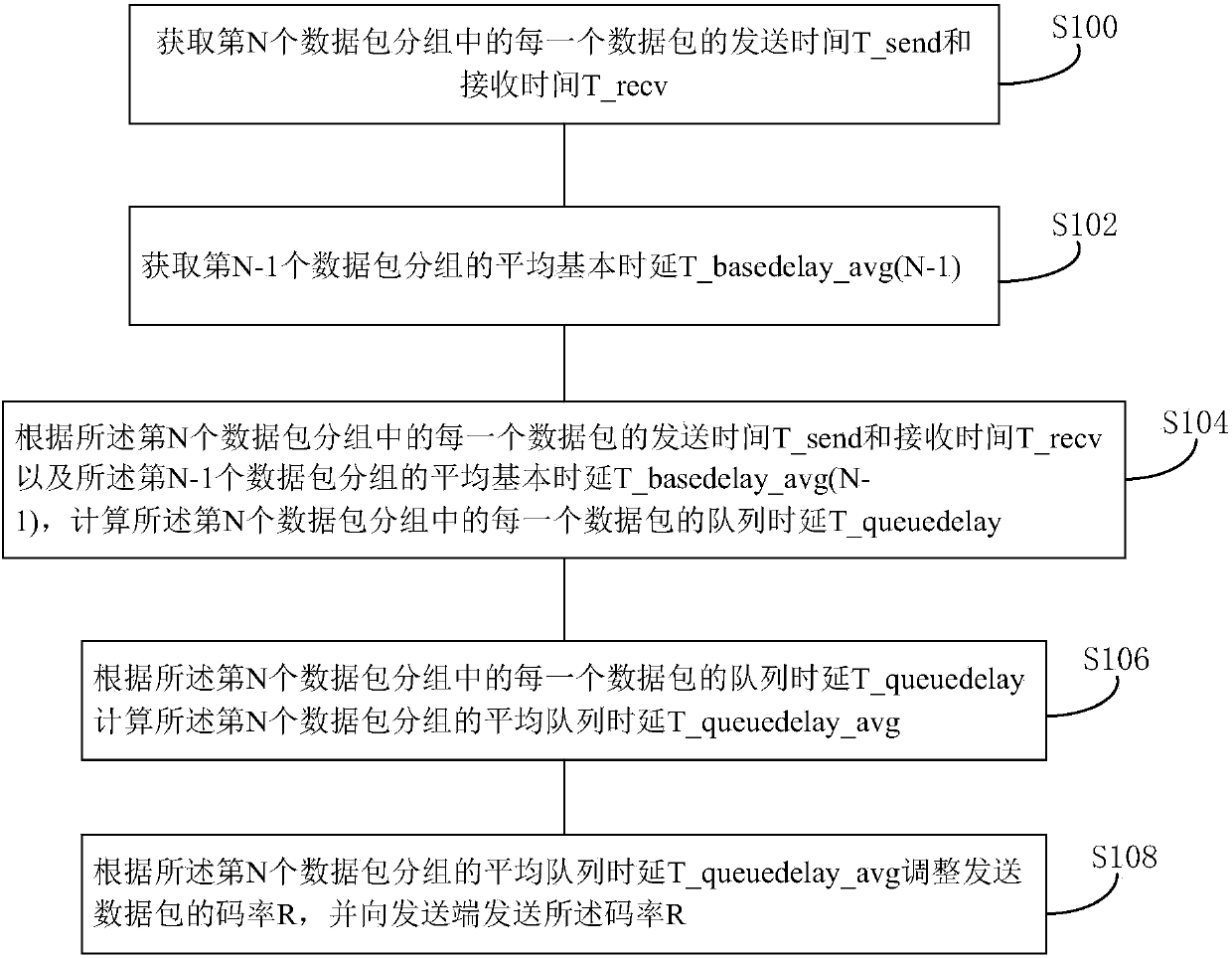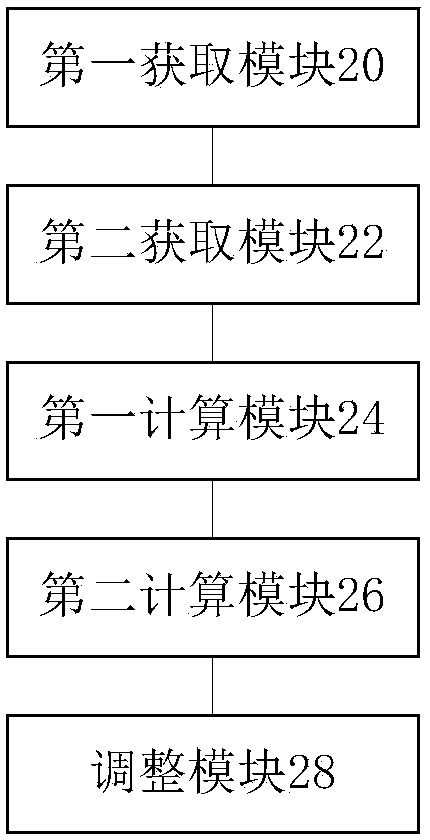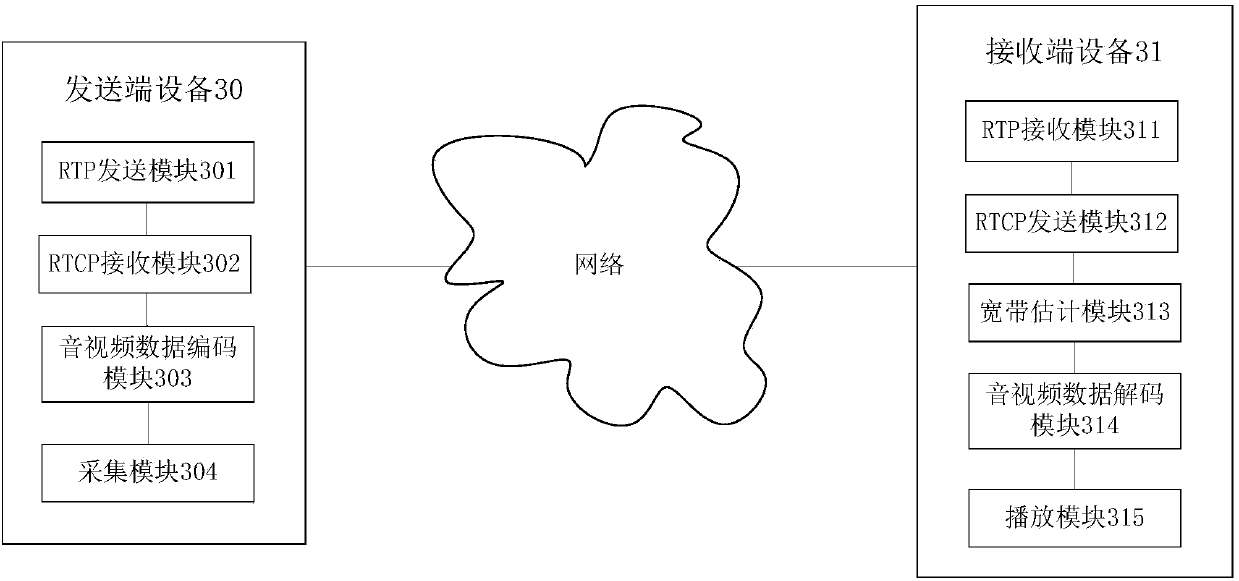Method, device, equipment and system for adjusting sending code rate of data packet
A data packet and code rate technology, which is applied in the field of communication, can solve problems such as inability to adapt to network scenarios, and inability to effectively adjust the data packet transmission code rate.
- Summary
- Abstract
- Description
- Claims
- Application Information
AI Technical Summary
Problems solved by technology
Method used
Image
Examples
example 1
[0105] Example one, Figure 5 It is a schematic diagram of a system for sending data packets according to Example 1 of the present invention;
[0106] In real-time communication, audio and video media are usually transmitted using UDP. Since UDP is a connectionless transmission protocol and a best-effort service method, congestion will inevitably occur in the network. UDP itself does not have a congestion control mechanism. After congestion occurs, it will cause discontinuous sound and video blurring, which will seriously affect the quality of calls. Therefore, network congestion control is an important technology related to user experience. In the prior art, congestion control mainly depends on parameters such as packet loss rate and delay. The method of judging network congestion by using queue delay can judge the trend of network congestion as early as possible before packet loss occurs due to congestion, so as to avoid further aggravation of congestion by adjusting the se...
example 2
[0113] Instance two, Image 6 It is a flowchart of a data packet sending method according to Example 2 of the present invention;
[0114] Such as Image 6The method shown is mainly implemented at the sending end 500 . The core idea is that the sending end updates the sending data packet sending code rate R according to the code rate information R_recv in the data packet fed back by the receiving end, and marks the time T_send when the packet is sent in the sent data packet.
[0115] The method may include the steps of:
[0116] Step 1, receiving the feedback RTCP packet;
[0117] Before implementing step 1, the sender can first initialize each parameter;
[0118] Step 1 may also include: judging whether a feedback data packet is received. If no feedback packet is received, skip to step 3.
[0119] Step 2, update the sending code rate;
[0120] The RTCP packet is fed back by the receiving end and carries the calculated or adjusted data packet sending bit rate. The sendi...
example 3
[0124] Example three, Figure 7 It is a flow chart of a method for adjusting the data packet sending code rate according to the third invention example.
[0125] Such as Figure 7 The method for adjusting the data packet sending code rate shown is mainly implemented at the receiving end 502 . The core idea is that the receiving end 502 processes as follows: grouping is performed according to the feedback time interval, each group calculates the basic delay T_basedelay of the group according to the sending time T_send in the header of the received data packet and the time T_recv of the current received packet, Queue delay T_queuedelay and average queue delay T_queuedelay_avg. When the grouping time is over, count the total amount of data S_total received by the receiving end during this period, and add weight to the T_basedelay of the group according to S_total. In multiple groups, the smaller the value of S_total, the weight of T_basedelay corresponding to the grouping The ...
PUM
 Login to View More
Login to View More Abstract
Description
Claims
Application Information
 Login to View More
Login to View More - R&D
- Intellectual Property
- Life Sciences
- Materials
- Tech Scout
- Unparalleled Data Quality
- Higher Quality Content
- 60% Fewer Hallucinations
Browse by: Latest US Patents, China's latest patents, Technical Efficacy Thesaurus, Application Domain, Technology Topic, Popular Technical Reports.
© 2025 PatSnap. All rights reserved.Legal|Privacy policy|Modern Slavery Act Transparency Statement|Sitemap|About US| Contact US: help@patsnap.com



